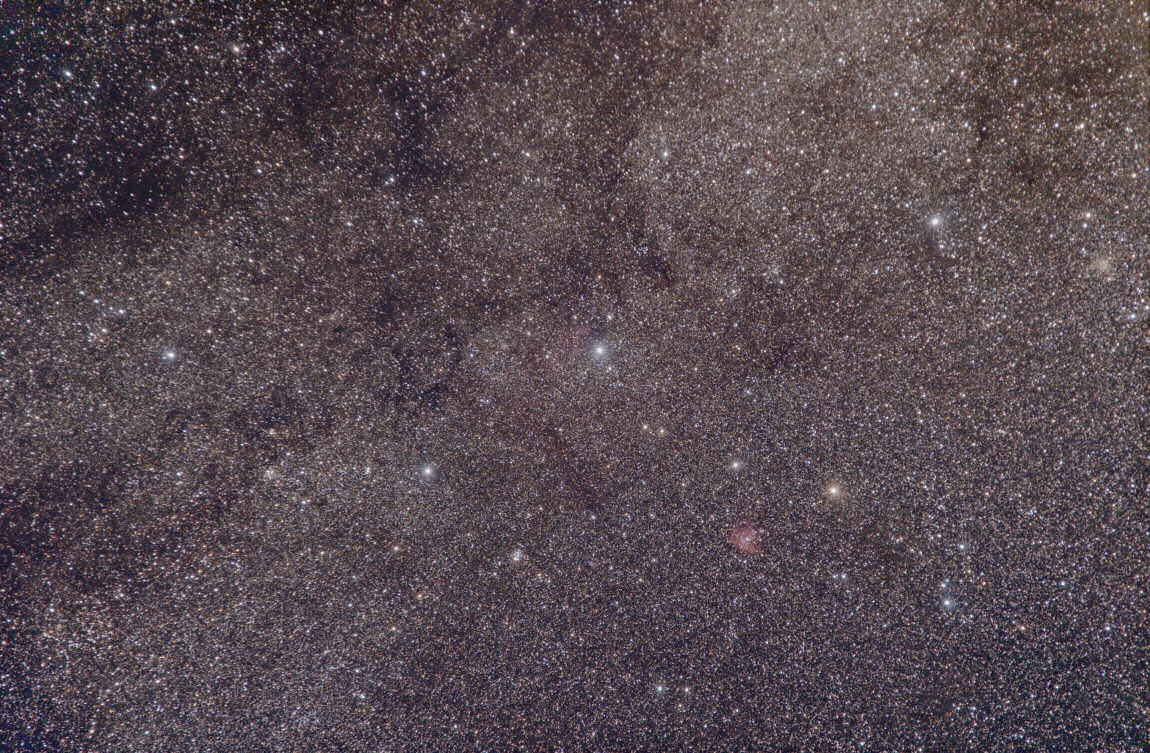
Move your mouse over the image above to get a version with constellation lines, deep-sky objects and labels drawn.
Cassiopeia is a large autumn constellation which includes the northernmost part of the Milky Way, making it rich in mostly galactic deep- sky objects. It culminates in early October but is visible for observers in mid-northern latitudes for most of the year due to it's high declination of about +60 degrees. Cassiopeia's five brightest stars form a flattened "W" shape, making it one of the most distinctive and best known constellations in the sky.
The main attraction in Cassiopeia are galactic clusters. 49 known open clusters exist within the constellation's boundaries, as well as a couple of small planetary nebulae, but no globulars. There do exist some galaxies towards the southern edge of Cassiopeia.
Yet another attraction of Cassiopeia are galactic nebulae. The brightest of these is NGC 281, sometimes called the "Pacman Nebula" by astrophotographers, visible east of the constellation's brightest star, Alpha Cassiopeiae, towards the lower edge of the photograph. Two much fainter examples are IC 59 and IC 63, visible as faint wisps of nebulosity immediately north and northeast of Gamma Cassiopeiae, the bright star near the center and middle star of the "W", respectively.
Well-known galactic clusters are found within the photograph are NGC 457, the bright "Owl" or "Airplane" Cluster surrounding Phi Cassiopeiae; M103 near Delta with about 25 stars in an area spanning 6 arcminutes; NGC 663, a rich cluster with many Struve Catalog doubles; and NGC 129, an array of 35 stars within an area of 21 arcminutes diameter. A very attractive star cluster is NGC 7789 near the right edge, one of the richest galactic star clusters in the sky. It consists of over 1000 stars of magnitude 10.7 and fainter in an area half the size of the full moon. I have encircled those and some more deep-sky objects in the mouse- over version of above photograph.
 Cassiopeia (Wide Field), standard lens photograph.
Cassiopeia (Wide Field), standard lens photograph.
 NGC 281 - Pacman Nebula, CMOS image.
NGC 281 - Pacman Nebula, CMOS image.
 NGC 7789, Wright-Newtonian photograph.
NGC 7789, Wright-Newtonian photograph.
 IC 59 and IC 63, Newtonian CCD-image.
IC 59 and IC 63, Newtonian CCD-image.
 Abell 85/LBN 576/CTB 1 - Medulla Nebula, CMOS image.
Abell 85/LBN 576/CTB 1 - Medulla Nebula, CMOS image.
Exposure Data